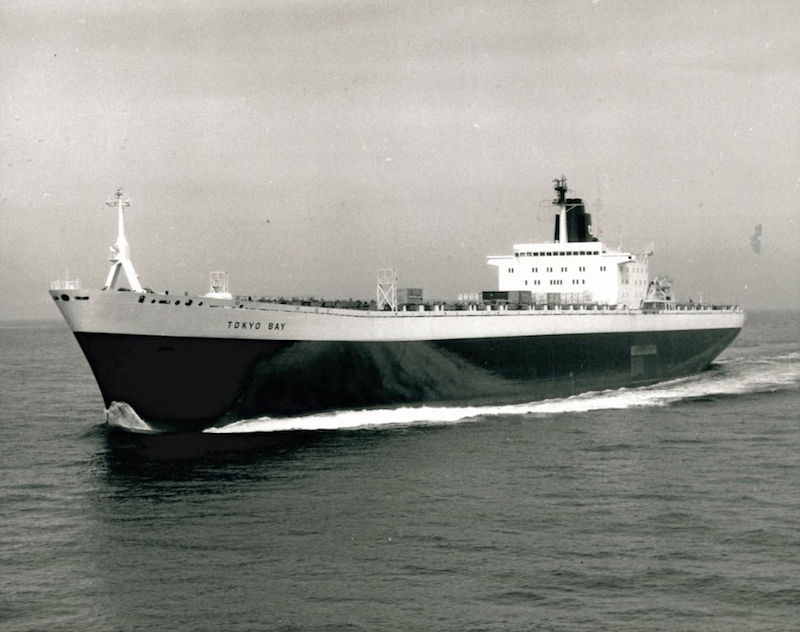
It was interesting to read the letter by Chris Haughton on the subject of being overtaken by Tokyo Bay. I am, however, rather surprised that of all the five ships in that class it should have been the Tokyo Bay, as I shall explain.
From 1971 to 1977, as senior second engineer, I was intimately involved in the building, sailing and servicing of all five ships. I was a member of the Ocean Fleets team overseeing the building of the Liverpool Bay, Kowloon Bay and Osaka Bay, the last of the five to enter service. I sailed as senior second engineer on the maiden voyages of Liverpool Bay and Osaka Bay. To this day I regard those five to six exciting years as the pinnacle of my career at sea. Promotion to chief engineer in 1977 was definitely an anti-climax.
In spite of being absolutely identical to the finest degree, the performance of the ships varied quite considerably. The Liverpool Bay struggled to reach 30 knots even in favourable conditions, but the Osaka Bay could hit 35 knots and burned less fuel to boot!
Following the 1973 oil crisis, the Trio consortium wanted to reduce the service speed of all the ships from 26 knots to 21 knots. This was fine for the owners of motor ships, but for the Bay class we were unable to operate safely on long passages at speeds lower than 23 knots without risking damage to the LP turbines. The first outward voyage at this new speed for me was around the world eastabout on Osaka Bay via the South African Cape with first stop Kelang in Malaysia.
Having rounded the Cape, we were well into the Indian Ocean when a message was received requiring us to increase speed to arrive at Kelang 24 hours ahead of our original schedule. With only about six days to go and pushing into the northeast monsoon, it was a very big ask indeed. For me it was an absolute dream. Opening up all the extra nozzles and firing the boilers at maximum output meant that every pressure, every temperature and all the bleeds and auxiliary pressure were at their optimum. In the north east monsoon, 30 knots was a struggle, but as we approached the northern tip of Sumatra she began to speed up. In the 24hrs before arrival at Kelang, we recorded 803 miles, an average speed of 33.5 knots.
In 1977 Ocean Fleets started a programme of converting all five ships to diesel. I wasn’t involved with that project, so I don’t know when the ship was converted, but if the QE2 at 30 knots was overtaken by a Bay boat my guess is that was the Osaka Bay before she was converted.
Thank you, Chris, for an excuse to reminisce.
John Barton
More letters
Britain's WW2 government acknowledged Merchant Navy sacrifice
As you will know, this year marks the 80th anniversary of VE Day. I enclose a copy of a transmission, sent by telegraphy in May 1945, from the Admiralty to 'all ships', expressing the victory message to the Merchant Navy, from the minister of war transport.
Warm QM2 welcome for Cunard war veteran
Knowing that we would be marking the 80th anniversary of VE Day this year, I was honoured recently to welcome onboard a Merchant Navy and Cunard veteran of the Second World War.
New addition to Hull historic trail celebrates maritime education
On 27 March 2025 at 12 noon, the Old Boys of the Hull Trinity House School Association and the Hull Trinity House Brethren held a ceremony to celebrate the work of Hull Trinity House School over more than two centuries.
